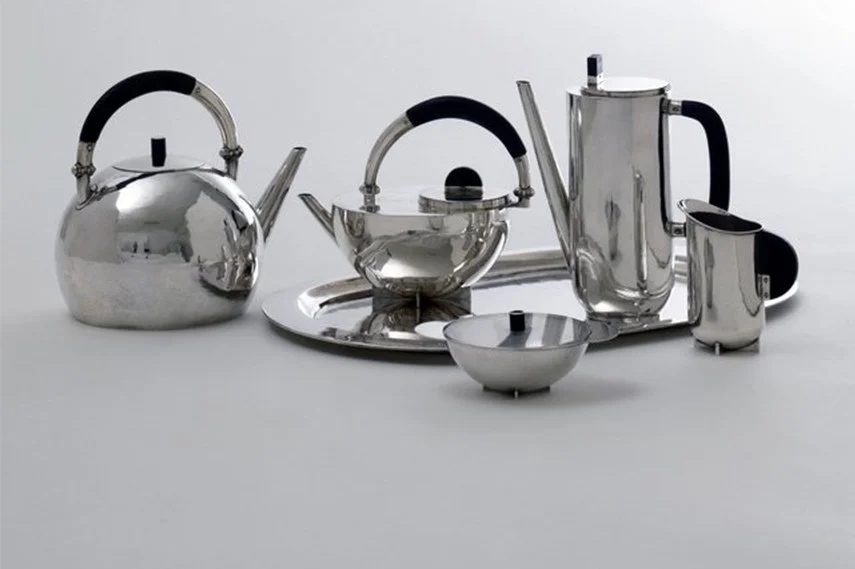Marianne Brandt: Bauhaus Innovator
Rediscovering Marianne Brandt: The Bauhaus Pioneer Who Transformed Function into Art
In the landscape of industrial design, where innovation and creativity intertwine, certain figures rise whose contributions, though profound, often remain overshadowed by more prominent narratives. Marianne Brandt, a German designer and artist, exemplifies this dynamic. Despite her groundbreaking work and visionary approach, Brandt’s legacy has sometimes been overshadowed by the towering figures of the Bauhaus movement. Nevertheless, her impact on modern design is undeniable, and her story highlights the importance of recognizing and celebrating the contributions of women in the creative fields.
Born in 1893 in Chemnitz, Germany, Marianne Brandt began her artistic journey during a time when the world was on the brink of profound change, both socially and artistically. As a woman navigating the predominantly male-dominated realms of industrial design and modernist art, Brandt faced significant barriers. Yet, her early work in the 1920s and 1930s quickly demonstrated a unique blend of functionalism and aesthetic innovation, capturing the attention of the Bauhaus community and setting her apart as a pioneering force in the fields of metalwork and industrial design.
Brandt's mastery of metalwork and her innovative approach to everyday objects marked a pivotal period in her career. She was particularly known for her ability to transform utilitarian items into works of art, seamlessly blending form and function. Among her most iconic designs are her geometrically precise and aesthetically refined teapots, ashtrays, and lamps, which have become emblematic of the Bauhaus ethos. Her designs, characterized by clean lines, minimalistic forms, and a keen attention to detail, reflect the modernist principle that objects should be both beautiful and functional—a concept that Brandt executed with unparalleled skill.
Throughout her career, Brandt's exploration of new materials and design techniques pushed the boundaries of conventional industrial design. Her work often incorporated elements of modernist abstraction, yet it remained distinctly practical, embodying the Bauhaus ideal of integrating art and technology. Brandt's use of materials such as steel and glass, combined with her ability to create designs that were both functional and visually striking, showcased her versatility and innovative spirit. Her contributions were not limited to metalwork; she also engaged in photography, painting, and design education, further cementing her role as a multifaceted artist and designer.
Despite the challenges she faced as a woman in a male-dominated field, Brandt's work received recognition and acclaim during her lifetime. She was the first woman to lead the metal workshop at the Bauhaus, a testament to her talent and leadership. Her participation in international exhibitions and collaborations with other leading designers of her time helped establish her as a key figure in the development of modern industrial design. However, like many women of her era, her achievements were often underappreciated or overshadowed by her male counterparts.
In recent years, there has been a resurgence of interest in Marianne Brandt's work, as design historians and enthusiasts have begun to reexamine her legacy and celebrate her contributions to modern design. Exhibitions, retrospectives, and scholarly works have brought her designs to the forefront, allowing a new generation to appreciate the depth and breadth of her creative vision. As we honor Marianne Brandt's pioneering spirit and artistic contributions, we also acknowledge the broader significance of recognizing the often-overlooked contributions of women in the arts. Celebrating their achievements not only enriches our understanding of design history but also fosters a more inclusive and equitable creative landscape.
Marianne Brandt's legacy serves as a powerful reminder of the enduring impact of innovative design and the vital role of women in shaping our cultural heritage. By celebrating her work, along with that of other overlooked designers, we continue to promote an appreciation for the diverse and dynamic voices that have shaped the world of industrial design.
Looking for unique gift ideas? Explore our range of designer glassware.
Pssst… It’s never too early to start shopping for unique Christmas gifts…







